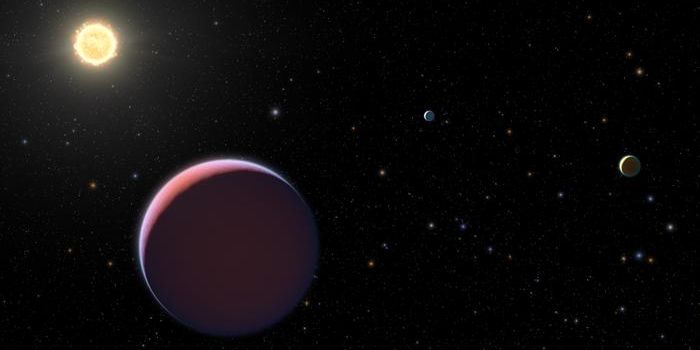According to new research published last week, Mars once contained an ocean larger than our own Arctic Ocean and covering more surface area than the Atlantic Ocean. But that was then, and this is now.

Using ESO's Very Large Telescope, along with instruments at the W. M. Keck Observatory and the NASA Infrared Telescope Facility, researchers monitored the atmosphere of the planet and mapped out the properties of the water in different parts of Mars's atmosphere over a six-year period. These new maps are the first of their kind.
The compiled research indicates that about four billion years ago, when Mars was a new planet it would have had enough water to cover its entire surface in a liquid layer about 140 meters deep, but the more likely scenario is that this water pooled to form an ocean that covered almost half of the planet's northern hemisphere. In some parts, the depths of this ancient ocean might have reached 1.6 kilometers or more.
"Our study provides a solid estimate of how much water Mars once had, by determining how much water was lost to space," said Geronimo Villanueva, a scientist working at NASA's Goddard Space Flight Center in Greenbelt, Maryland, USA, and lead author of the new paper. "With this work, we can better understand the history of water on Mars."
The new figures are the result of observing and classifying two different kinds of water on Mars. One is the garden-variety form of water, made with two hydrogen atoms and one oxygen, H2O. The other is HDO, or semi-heavy water, a naturally occurring variation in which one hydrogen atom is replaced by a heavier form, called deuterium.
Water with this heavier element is not as easily lost to evaporation as H2O is, so the more water lost through evaporation, the greater the amount of HDO water left on Mars.
The chemical signatures of the two types of water were analyzed and with these observations the team was able to calculate how much water must have existed during the planet's early years. While the planet is a desert today, the maps revealed microclimates and seasonal changes that have never been described.
Ulli Kaeufl of ESO, who was responsible for building one of the instruments used in this study and is a co-author of the new paper, adds: "I am again overwhelmed by how much power there is in remote sensing on other planets using astronomical telescopes: we found an ancient ocean more than 100 million kilometers away!"
The team was especially interested in regions near the north and south poles, because the polar ice caps are the planet's largest known reservoir of water. The water stored there is thought to document the evolution of Mars's water from the wet Noachian period, which ended about 3.7 billion years ago, to the present.
The maps created by the team show that Mars must have lost a volume of water 6.5 times larger than the present polar caps based on the HDO concentrations found there. The volume of Mars's early ocean must have been at least 20 million cubic kilometers.
"With Mars losing that much water, the planet was very likely wet for a longer period of time than previously thought, suggesting the planet might have been habitable for longer," said Michael Mumma, a senior scientist at Goddard and the second author on the paper.
The results of the study were published in the online journal Science on March 5, 2015









